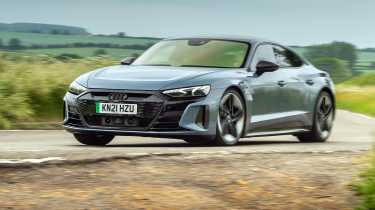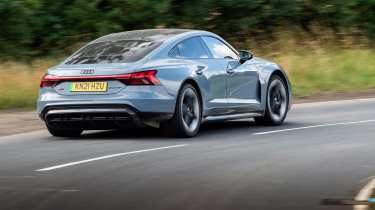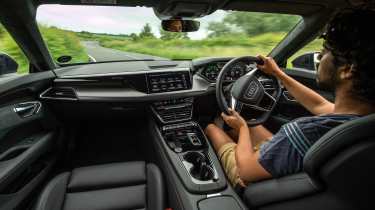Audi RS e-tron GT Fast Fleet test – 6 months in the 637bhp electric saloon
We reflect on our time with the first EV on the evo Fast Fleet, the original Audi RS e-tron GT
Taking Porsche’s impressive J1 platform to produce its own take on the electric four-door coupe-saloon that has served Porsche so spectacularly well in the shape of the Taycan, things looked promising for the Audi RS e-tron GT. To find out how it fared day-to-day and in the real world, we made it the first electric car to join evo’s Fast Fleet.
Not all were taken with the e-tron’s looks, the long front overhang seeming out of proportion with the rear and there being too much plastic trim for a car costing the wrong side of £100,000. And for an RS model it lacked the visual punch of its ICE relatives, although some considered this to be a good thing.
> The new Audi RS e-tron GT Performance has more power than a McLaren P1
There were also raised eyebrows when it came to the GT’s cabin. This was a twofold issue. As with the exterior, the interior lacked the flourishes of the likes of an RS6 when it came to the design and materials used. It felt and looked too normal. Add in the A3-sourced switchgear and an HMI unit taken from other series-production Audis and it seemed a bit last-century. Where Porsche’s Taycan looks and feels like no other Porsche in the family, with a distinct, future-inspired design language, the e-tron GT felt disappointing and like a missed opportunity.
How it drove, however, was anything but disappointing, as it proved that few cars are as relaxing and calming as a premium EV. The lack of powertrain vibration and noise, even compared with the most well-insulated ICE vehicles, took the stress out of every journey. The ride was settled, never interrupting the calmness in the cabin, while the weight of the GT’s 90kWh battery coupled to the rest of the car (2347kg all-in!) meant a sizable obstacle was required to distract it from its path.
More reviews
Yet it didn’t feel as heavy as it actually was, the processors working 24/7 to keep all four wheels heading in the desired direction. Curiously, the steering, which was too light most of the time, felt overly heavy when one of those microprocessors decided that was what was required, although you could always get the GT turned in, get it to hold its line and be in control of it rather than feeling like a passenger. However, if you had any load in the chassis and hit a bump or compression mid-corner you felt a little out on a limb, as it wasn’t a car that could be brought back together with precise steering inputs and throttle adjustment.
Being electric, it was of course silly quick when you called upon both motors to distribute their 637bhp and 612lb ft instantly through both axles. But as with all electric cars the acceleration thrills soon faded away, leaving a performance car that had little else to interact with: no engine revs to balance, no gearshifts to manage – manual or paddleshift.
If its range were over 300 miles (we managed 230 in the summer months, but this shrank to the low 200s as the temperatures dropped) the opportunity to replace an RS7 or equivalent with a car such as an e-tron GT would be hard to resist. Even so, it still has plenty to offer, especially for those fortunate enough to have more than one car at their disposal. The RS e-tron GT is far from perfect, but the calming effect of an electric car on monotonous journeys is hugely appealing – especially so if you know there is something more analogue and engaging and characterful waiting for you at home.
| Date acquired | June 2021 |
| Duration of test | 6 months |
| Total test mileage | 7598 |
| Overall mi/kWh | 2.8 |
| Costs | £0 |
| Purchase price | £133,340 |
| Value today | c£65,000 |
This story was first featured in evo issue 295.








